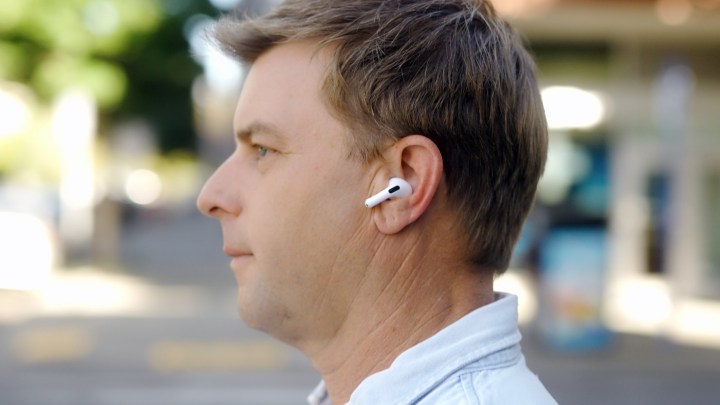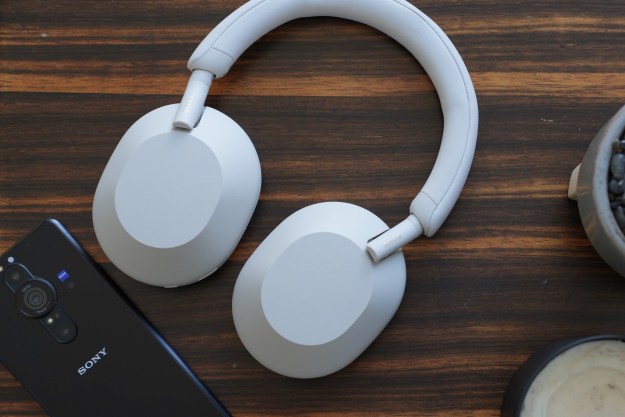Our headphones and earbuds are everyday audio accessories that many of us can’t live without. These days, big brands like Sony, Bose, and Apple have really got sound technology nailed down, delivering in-ear and over-the-ear products that look great, sound amazing, and are built for everything from commuting to exercising to working. They come in all sorts of varieties, including wired and Bluetooth wireless models, and with features such as active noise canceling (ANC), spatial audio surround sound, and more. But “perfection” is a word muttered with much caution in the world of consumer tech, and no matter how much you’ve spent on your premium headset or flagship earbuds, those top-dollar cans may still get bugged up now and then.
Whether it’s trouble with the headphones' sound, how you’re using them, or what devices you have them connected to, we’ve put together this roundup of the most common headphone problems we hear about all the time, as well as what you can do to troubleshoot and fix each issue.
Charge and update
Before we get started, one of the most important things you can do is ensure your headphones or earbuds are fully charged (if they're of the wireless variety, of course). And almost as important is making sure the firmware is up-to-date (check out our detailed post on how to do this for Apple AirPods). Unlike many other devices,
But if you’re using a product that does offer automatic or manual updates, it’s a good idea to check every few months to see if there are any new updates to download and install.
Turn your headphones off and on again
It's the IT Crowd's favorite solution, but if you have a set of headphones with power, turning them off and back on often resolves most issues you might be having. You can also restart the device you're connecting them to as well, just to rule that out.
For Bluetooth devices, you can also try turning Bluetooth off and back on again to re-pair them. More on this next.

Your headphones won’t pair to your device
One of the best features of your wireless headphones can also become one of the biggest pains. We’re talking about Bluetooth pairing, and even though we’re many generations into Bluetooth, it’s not uncommon to run into a handshake issue between your headphones and a new or existing device once in a while. Not to worry, though, as there are a few different things you can try to get Device A talking to Device B.
Step 1: For the most part, pairing a new set of Bluetooth headphones to your phone, tablet or computer is just a matter of pressing or holding down a single button to get the
If your headphones or earbuds aren’t pairing to your host device, the first thing you should do is reset the
Step 2: If you’re still having trouble, the next thing you should do is head into the Bluetooth settings of your host device to see if your headphones are connected. If they’re not, you may just need to re-pair them. If they are, but you’re still not getting sound, it may sound ridiculous, but check to see if your volume is turned down.
It's not? OK, whew. It’s also possible that your headphones are paired to another device. Check the Bluetooth settings of your other hardware to see if this is the case.
If your headphones come with a companion app, you may also be able to check to see what devices your
Step 3: If your headphones are paired to another device, you can usually force the device to forget the pairing altogether, which should force your
Step 4: If your Bluetooth headphones are low on battery, it’s a good idea to charge them up before attempting to pair them to a new device. While battery life isn’t always a factor, we’ve seen a number of headsets start acting up when those milliamps start dipping below 25%. Conveniently, most modern
You’ll also want to make sure hardware isn’t superseding software. Many Bluetooth headphones are running Bluetooth 5.0 or newer, but that doesn’t mean that your ancient laptop or tablet supports these modern Bluetooth profiles.

Poor sound or no sound at all
Our next section of issues and fixes is going to focus on lackluster sound. Maybe your wireless (or wired) headphones are paired to your phone, but for whatever reason, whenever you start streaming music, you have some kind of issue with audio quality, such as stuttering sound, sound that intermittently drops in and out, or a total loss of sound altogether. This can potentially be caused by either a poor Bluetooth connection from your device to your
Step 1: Check to make sure you've got a good internet connection. Music-streaming platforms like Spotify and Apple Music deliver some pretty high-quality streams, but if your device has a poor internet connection over Wi-Fi or data — perhaps you're on a road trip in a rural area with spotty service, and you haven't downloaded your music for offline listening, for example — this can negatively impact the quality of your stream or interrupt it altogether.
Step 2: Turn off some features. Many headphones come with companion apps that are packed with all kinds of additional audio features, such as EQ, ANC, or transparency mode. If you’ve applied any sound customizations to your
Step 3: Check if you may be standing out of Bluetooth range of your host device, or if there’s something impeding the signal. Most Bluetooth headphones work best when you’re no more than 35 to 100 feet away from your device, but once you start factoring in obstacles such as walls and floors, and potential interference from microwaves, clock radios, and other tech, you start cutting down on signal strength.
Try standing closer to your device to see if your sound improves. You could also try turning off any unnecessary components that may be causing interference.
Step 4: Check the cable. If you’re experiencing poor sound quality, sudden audio dropouts, or no sound whatsoever, and you’re using a pair of wired headphones, there’s a chance that the cable itself could be damaged in some way. A good way to test this is to plug your
If audio intermittently returns or sound quality improves, you’re dealing with a damaged cable. In many cases, you may need to invest in a new pair of headphones, although some brands will let you order replacement wires.
Step 5: Give them a good cleaning. If you’re using a set of wired headphones, you’re probably connecting them to the headphone jack or USB connection of your host device to listen to music. Unfortunately, normal wear and tear can lead to quite the buildup of crud in these common ports. If there's too much gunk, your device's port may not be making enough contact with the headphones' input end.
Use a toothpick, cotton swab, and/or can of compressed air to loosen and remove any debris that’s hanging out in your Lightning, USB-C, or headphone jack, then try plugging your headphones in again.

Only one earbud is working
If you’re only getting sound out of one earbud, there’s probably a holdup in the connection both buds share with each other. Thankfully, resetting this connection is usually as straightforward as popping your buds back in the charging case for 10 seconds or so. Once you remove the earbuds and re-pair them to your host device, they should be working again.

Wired or wireless headphones: Which is better?
One might think that, as far as headphones go, wired or wireless won't make much of a difference for the long haul, but that's simply not the case. Like any device, the more features you start integrating into your tech, the more things are prone to go wrong. It's like how modern smart appliances are often repaired and replaced far more than traditional washers and dryers with bare-bones buttons and knobs.
If you're on the fence as to whether you should go with a set of wired or
In terms of sound quality, wired headphones are also connected directly to the host device, so things like latency and misfiring audio codecs isn't something you have to be concerned with. With wired
Cost-wise, wired headphones are also a bit cheaper when compared to wireless options. But this isn't to say that
As far as portability goes, there's no better feeling than not being tethered to a wire. Have you ever pulled on an auxiliary cord the wrong way? Doing so can catapult your device from one end of the room to the other, or cause damage to the headphone jack, Lightning port, or other connection. Plus, today's
Editors' Recommendations
- Best AirPods Max deals: New and refurbished for $440
- Marshall’s latest headphones get 100 hours of battery life and wireless charging
- The most common Fire TV Stick issues and how to fix them
- The 6 best wireless headphones for watching TV in 2024
- The best kids headphones of 2024: for fun, safety, and sound





